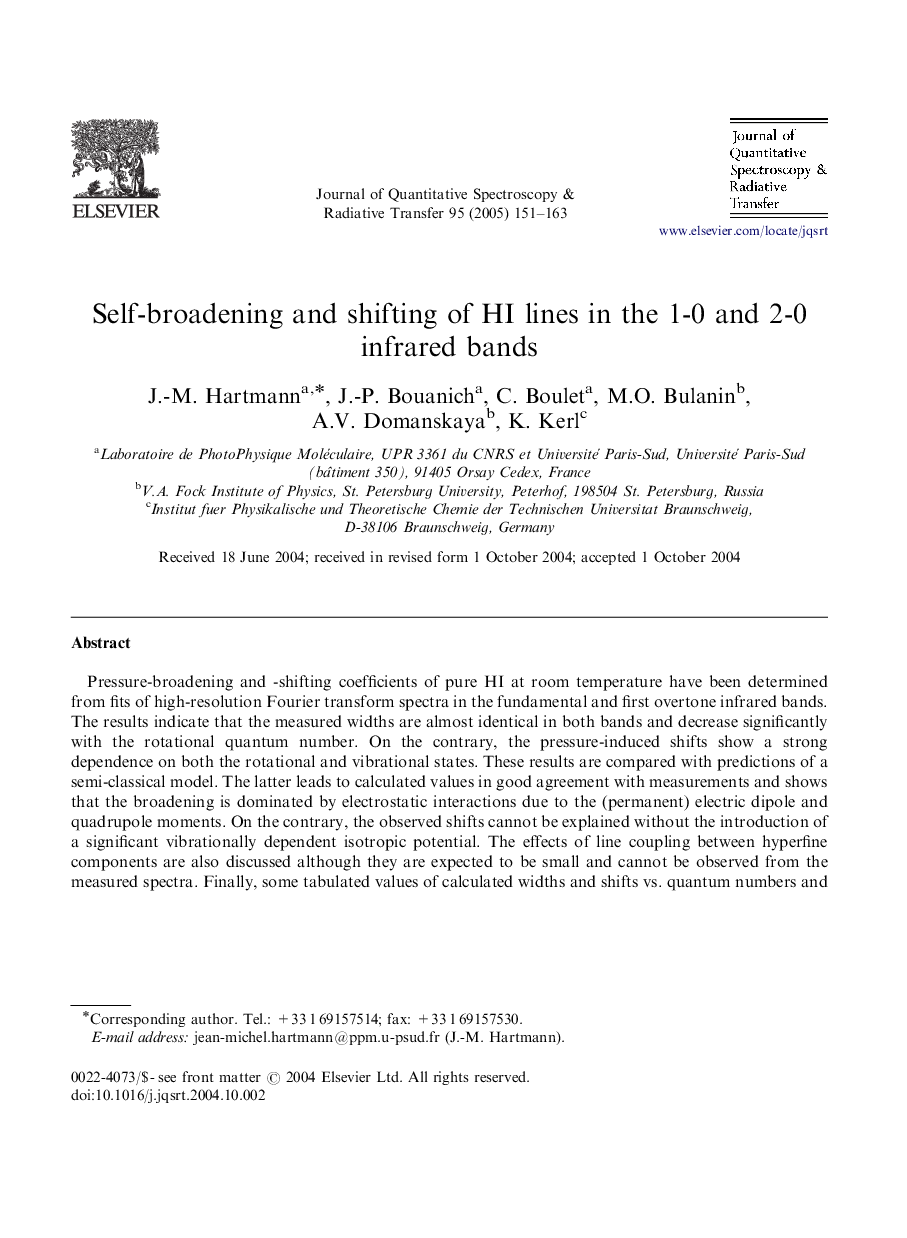| Article ID | Journal | Published Year | Pages | File Type |
|---|---|---|---|---|
| 9599078 | Journal of Quantitative Spectroscopy and Radiative Transfer | 2005 | 13 Pages |
Abstract
Pressure-broadening and -shifting coefficients of pure HI at room temperature have been determined from fits of high-resolution Fourier transform spectra in the fundamental and first overtone infrared bands. The results indicate that the measured widths are almost identical in both bands and decrease significantly with the rotational quantum number. On the contrary, the pressure-induced shifts show a strong dependence on both the rotational and vibrational states. These results are compared with predictions of a semi-classical model. The latter leads to calculated values in good agreement with measurements and shows that the broadening is dominated by electrostatic interactions due to the (permanent) electric dipole and quadrupole moments. On the contrary, the observed shifts cannot be explained without the introduction of a significant vibrationally dependent isotropic potential. The effects of line coupling between hyperfine components are also discussed although they are expected to be small and cannot be observed from the measured spectra. Finally, some tabulated values of calculated widths and shifts vs. quantum numbers and temperature are proposed. They should be useful for infrared sounding of HI amounts, particularly in the monitoring of the hydrogen production through the sulfur-iodine thermochemical cycle.
Keywords
Related Topics
Physical Sciences and Engineering
Chemistry
Spectroscopy
Authors
J.-M. Hartmann, J.-P. Bouanich, C. Boulet, M.O. Bulanin, A.V. Domanskaya, K. Kerl,
